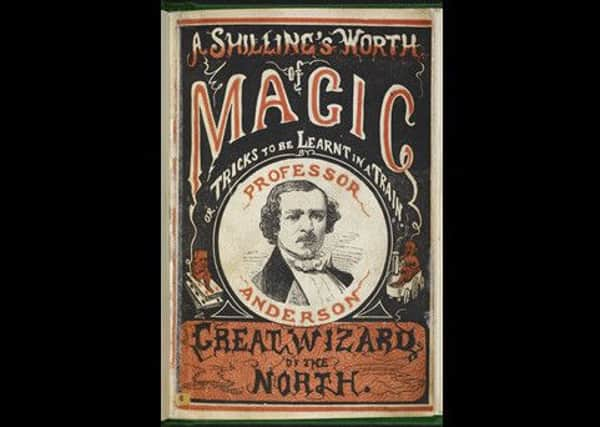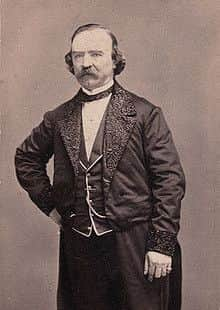The Great Wizard of the North and his spell on Scotland and beyond


John Henry Anderson was born in the tiny Deeside settlement of Kincardine O ‘Neil and went on to dominate the global magic scene with him becoming one of the first men to pull a rabbit from a hat as well as accomplish the potentially fatal bullet catch.
According to newspaper reports of the day, Lindsay earned “enormous sums of money through his entertainment” with articles also detailing a great benevolent spirit, particularly to the young and the sick of Aberdeen.
Advertisement
Hide AdAdvertisement
Hide AdAnderson is also remembered as an “unequalled” self publicist who seized the opportunities of advertising to generate huge crowds at his show with bills for a night with “Professor Anderson” to be found as far a field as Niagra and even the Pyriamids as he hit his peak.


An article printed in the Press and Journal on September 3 1874 shortly after his death, said: “His sleight of hand was not so great as many others in his time but what he lacked in agility of manipulation he made up in the elaborateness of his scenic and trick accessories.
“In the course of his life he had travelled three times round the world to carry out his numerous engagements.”
Born in 1814, Anderson started his career with a travelling drama group and took up magic at the age of 17. His breakthrough was perhaps performing in the house of Lord Panmure, whose endorsement allowed him to hit the road for a successful spell before settling in London, where he opened the New Strand Theatre in 1830.


It was Sir Walter Scott who christened him “The Great Wizard of the North” with Anderson’s reputation also leading him to later perform for Queen Victoria and Prince Albert at Balmoral.
The wizard was to leave for Ireland - where he was described as a “universal favourite - before setting sail for California, Canada and then Australia in the 1850s.
By the time he returned to Great Britain, he found a new generation of magicians on the stage with his popularity perhaps outshined.
Advertisement
Hide AdAdvertisement
Hide AdAnderson had planned to end his career with a performance in the Granite City in 1854 but the huge public response drove him on with major shows in London. However, a fire in the New Covent Garden Theatre in 1856 destroyed all of the magician’s property for a second time. A fire at his former theatre in Glasgow, The City, had bankrupted him 12 years earlier.
In April 1863, his “farewell tour” of Aberdeen was advertised in the Press and Journal with promises of a “grand, incomprehensible and cabalistic” show for 15,000 people over six nights at the Music Hall. To be performed was his “new sensation trick”, the Phoenix Bonnet.
Also printed in the newspaper was a list of letters to public institutions, including one addressed to the director of the Gordon’s Hospital for children with hearing and speech problems.
The letter said: “As my entertainment is of a scientific and strictly moral character I judge that it will not only be beneficial to them as an amusement but also for its instructive nature.”
A second letter, to the Directors of the Royal Infirmary, added: “During my long professional career in all parts of the globe I have always concluded it my duty to contributed to the asylums of the sick in the various cities where I have temporarily sejourned. As a native of Aberdeen, I am desirous of showing my gratitude.”
He then pledge to give the hospital the “grand receipts” of one of his final shows.
Large crowds gathered in Aberdeen’s Union Street for his funeral with Anderson buried next to his mother in St Nicholas Churchyard.
Advertisement
Hide AdAdvertisement
Hide AdHarry Houdini, once a rival who claimed Anderson as a major inspiration, helped pay for the upkeep of his grave.
At the weekend, the work of Anderson and several other magicians was toasted at the 90th anniversary gala dinner of the Aberdeen Magical Society.
